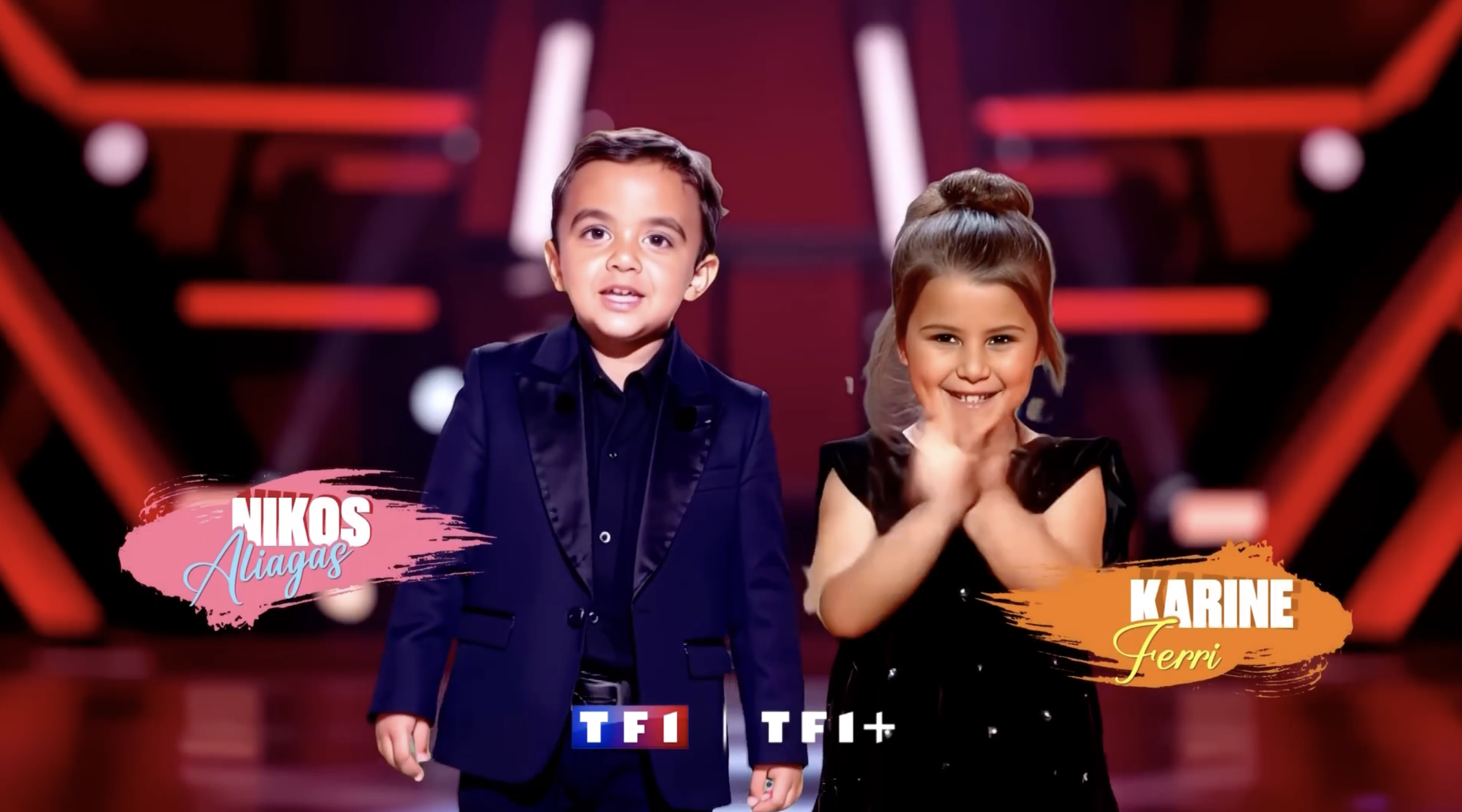Advertising AI can be a great asset... or a total disaster. Unfortunately, TF1 has just illustrated the second option.
TF1's advertising failure: analysis of an AI failure
For teaser The Voice Kids, TF1 tried an innovative approach: a trailer 100% generated by artificial intelligence. The idea seemed appealing on paper:
- Coaches transformed into a children's version
- A pleasant recreational atmosphere
- Surfing the AI trend of the moment
Unfortunately, the end result proved to be disastrous and is now the subject of debate on social networks.
The blatant technical errors
1. Lipsync failing
The lip sync between voices and mouth movements is flawed, creating a particularly disturbing “poorly dubbed movie” effect.
2. Worrisome faces
AI-generated faces present this artificial and disturbing aspect typical of poorly controlled content - what we call the “uncanny valley”.
3. Faulty anatomy
Mutant hands and other anatomical aberrations immediately betray the artificial origin of the content.
Why did this AI ad fail?
Methodless AI, a costly trap
This campaign perfectly illustrates the risks of an amateur approach to advertising AI:
- Lack of technical mastery AI tools
- Lack of quality control stringent
- Lack of awareness of boundaries Of technology
- Precipitation in the implementation
The impact on brand image
Even worse: misused, AI can seriously damage your brand image. TF1 is learning it the hard way with this campaign that is going viral... for the wrong reasons.
Best practices for successful AI advertising
1. Master the tools before producing
Advertising AI requires real technical expertise. It is not enough to have access to the tools, you have to know how to use them correctly.
2. Test and iterate
Each AI generation must be tested, analyzed, corrected. The first version is never the right one.
3. Define relevant use cases
Not all projects are suitable for AI. It is necessary to identify where it brings real added value.
4. Maintain strict quality control
The human eye remains essential for detecting imperfections and aberrations.
Advertising AI: a rapidly changing context
It should be noted that this TF1 campaign was probably produced several months ago, at a time when AI tools were less efficient than they are today.
Technologies are evolving at breakneck speed:
- Best generation algorithms
- More accurate lipsync
- More realistic face rendering
- Automatic correction of anatomical aberrations
Successful examples of creative AI
Animated babies can function
Unlike the TF1 failure, other creators succeed brilliantly with similar concepts:
- @junkboxai on Instagram (1.2M subscribers) has a perfect command of AI animated babies
- LThe pubs in Evian have long proved the effectiveness of the concept (lThe famous 2009 baby roller ad, made without AI, remains a reference)
A debate that reveals divergent approaches
This TF1 campaign generated a lot of reactions in the creative community, revealing different visions of advertising AI.
Experimentation before perfection
Some professionals take a more lenient approach, recalling that any technological innovation goes through an awkward learning phase. The first digital trailers on television were also often flawed, but were part of the road to mastery.
From this perspective, TF1's initiative could be seen as a positive introduction of AI on major television channels, even if the execution leaves much to be desired.
The assumed buzz strategy
An interesting hypothesis is emerging: what if these “defects” were voluntary? The objective would then have been to get people talking rather than producing perfect advertising. AI had to be seen, a lot, to create debate.
If this theory proves to be accurate, TF1 would have succeeded in its bet: to get The Voice Kids talked about long before it was broadcast.
Underlying ethical issues
Beyond the technical aspects, this campaign raises deeper questions:
Creative responsibility: When a production is stamped “made by artificial intelligence”, where is the responsibility of the studio that delivers this content?
The use of virtual childhood: Creating children in AI could be a way of circumventing the strict legal framework for the protection of minors on screen. But when the visual result becomes close to reality, a fuzzy zone sets in: are we still talking about creation or already about simulation?
Image rights, a positive point
An aspect that is often overlooked deserves to be highlighted: TF1 uses AI on its own intellectual property, avoiding the legal pitfalls associated with image rights. This is already better than some productions that navigate troubled waters in this field.
An alternative technical reading
Some analysts propose a different interpretation: the apparent “defects” (unsteady lipsync, strange faces, mutant hands) would in fact be deliberate choices to create an assumed distance. Disclaimer and exaggeration would then become signs of a caricatural desire.
In this reading, producing a 100% realistic version would have created a much greater discomfort for the viewer.
Advertising AI in 2025: opportunity or pitfall?
These debates perfectly illustrate the current challenges of creative AI. Failure (or success?) of TF1 should not discourage innovation, but reminds us of the importance of technical mastery.
The challenges are clear:
- Mastering technology before using
- Respect your audience by delivering quality
- Be accompanied by experts
- Define a clear strategy : assumed experimentation or professional production?
Conclusion: don't repeat TF1's mistakes
AI can revolutionize your communication... or sabotage it. The difference? Expertise, method, support.
Don't let AI damage your brand image. Get support from professionals who master these technologies.
Need help with your creative AI projects? Contact HEYIA Studio at benjamin@heyiastudio.com for a free audit of your needs.









